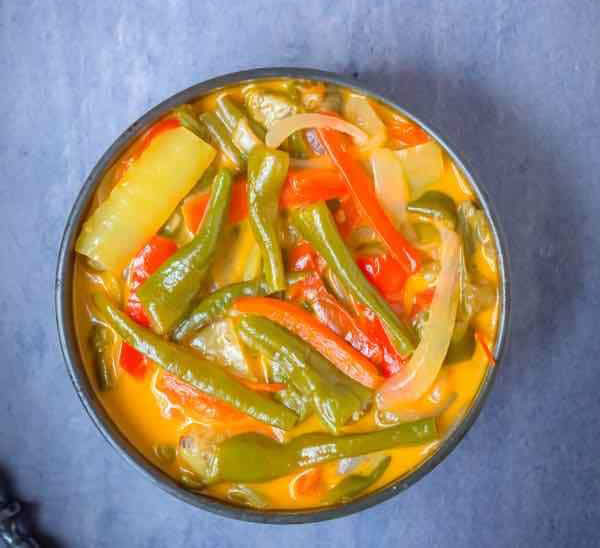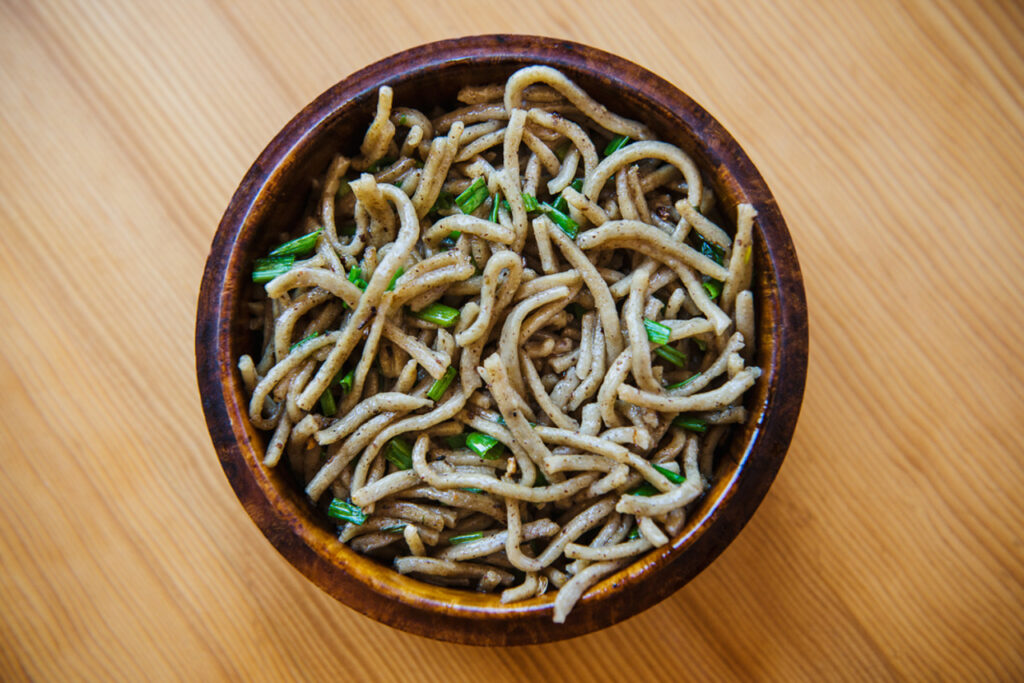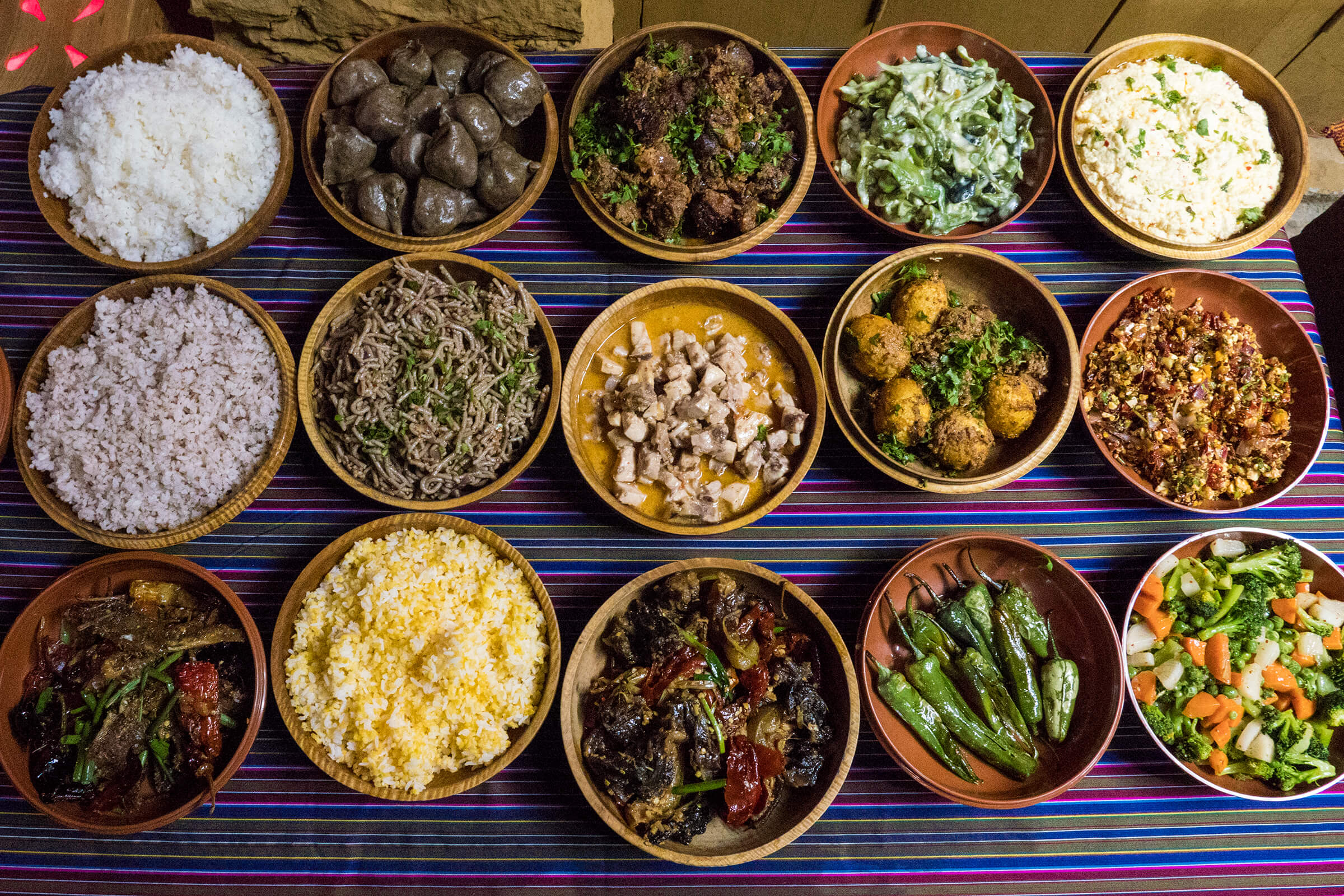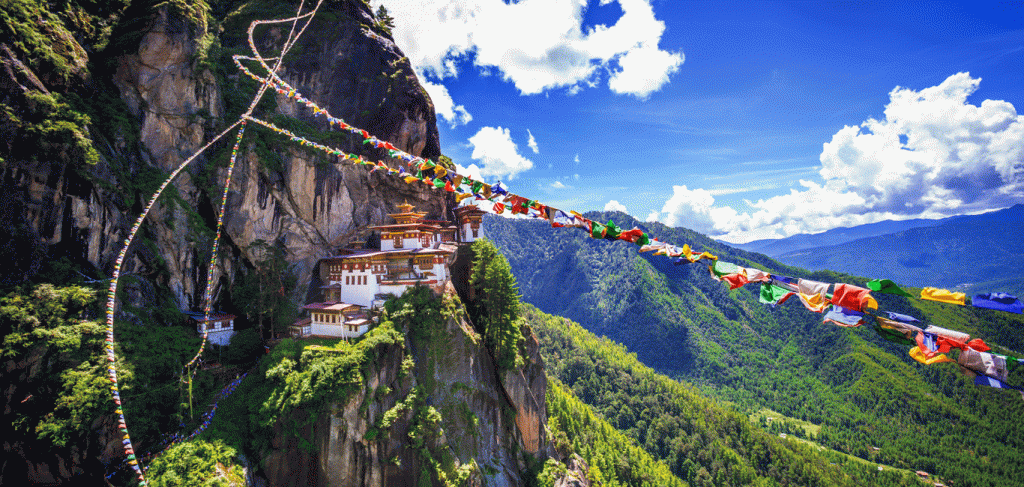
- Ema Datshi – Stew made of Chillies and Cheese
‘Datshi’ in the Bhutanese language of Dzongkha means ‘cheese’, which is what they use in several dishes, the most popular being Ema Datshi which is like a stew made from chilies and cheese (‘Ema’ means chilies) and might prove to be too spicy for some. Being the national dish of Bhutan, it is unarguably the most popular dish in the country. Any discussion about Bhutanese food cannot go without the mention of Ema Datshi.
The chilies are split lengthwise with their seeds and ribs removed and are mixed with cheese, garlic, water, and some oil. Is this cheese a special kind of farmer’s cheese that doesn’t dissolve in water and is hardly found outside this nation? Sometimes, onions and tomatoes are added, and Yak cheese might also be used. There might be slight variations in the preparation of Ema Datshi throughout the nation (such as the consistency of liquid), but the ultimate essence remains.
- Jasha Maroo or Maru – Spicy Chicken Stew or Curry
Another dish worth tasting would be the Jasha Maroo which is like a spicy stew or curry made with diced chicken, onion, garlic, chilies, tomato, ginger, and coriander leaves. Ginger gives this dish its essence. It may be served with a generous portion of chicken broth, and beef may also be used in place of chicken. This is usually done with red rice, as is in the case of most Bhutanese dishes.

- Phaksha Paa – Pork with Red Chilies
Paa is a curry with gravy or a meaty stew. Phaksha Paa highlights another favorite item of the Bhutanese people – pork. This dish comprises pork slices stir-fried with whole red dry chilies (yet another spicy dish), ginger, and Bok Choy. Bok Choy is also known as White Mustard Cabbage or Pak Choy and is peppery to taste and has a celery-like stalk with dark leaves. It is used in stews like this and fresh salads. Mountain vegetables such as radishes and spinach may also be added to Phaksha Paa. This is often eaten along with rice and Datshi dishes.
- Suja – Bhutanese Butter Tea
Tea is frequently consumed in Bhutan but is a little different. The locals mostly indulge in butter tea, also known as Suja or Po Cha or Goor Goor, which is usually served after meals and is found to be quite comforting in the cold weather. Fermented yak butter is made from fresh yak milk, and this butter is then boiled along with tea leaves and water. It is a bubbly drink that tastes more like butter than tea, and its salty taste might surprise some. Butter tea is relished in Tibet and parts of Nepal, and Suja can also be made with cow’s butter.
- Jaju Soup – Traditional Bhutanese Soup
Jaju is a traditional Bhutanese soup, generally served along with other dishes aside. It is made up of green leafy vegetables like local spinach or even turnips. The broth is prepared with milk and butter. Sometimes, cheese is also added to the preparation, making it heartier and tastier.

- Puta – Buckwheat Noodles
Puta is a type of traditional Bhutanese noodle. They are a healthy alternative to regular noodles, made from buckwheat. They are generally served boiled but can also be stir-fried in oil, and they can be spiced up by adding different sauces and sauteed vegetables. Serving as an alternative to rice, buckwheat noodles serve as one of the staple foods in Bhutan.
- Zow Shungo – Veggie Dish
As the term, Zow – which means splendid suggests, this dish is a popular favorite among Bhutanese cuisine. It is made from leftover vegetables and red rice and can be prepared quickly and easily, and it is a healthy option that ensures that you do not have to throw away any leftover veggies.
Some other food items to sample when in Bhutan would include momos, dumplings made with buckwheat and filled with spinach, cheese, turnips, and other ingredients, eaten with a spicy sauce called Ezay, which are a specialty of the Haa Valley, along with other buckwheat dishes. Goep is another popular dish made with tripe which is stir-fried with green onions, chilies, and vegetables. The list doesn’t stop at that. As one explores more, one will come across more exotic dishes (probably not any less spicy) and leave with an overall wonderful experience of tingling taste buds.
Visit MakeMyTrip for bookings. Also, have a look at our various monthly issues.




